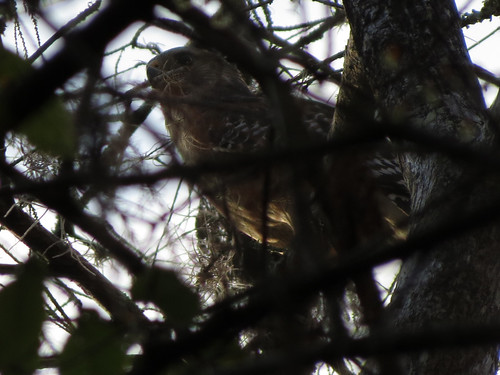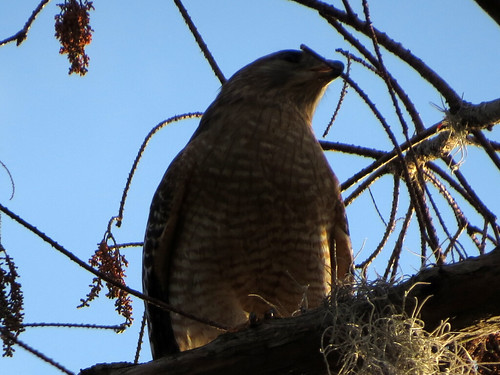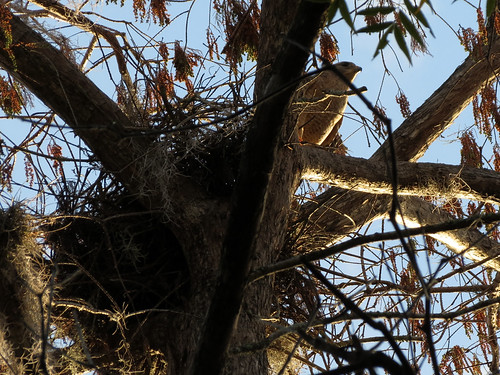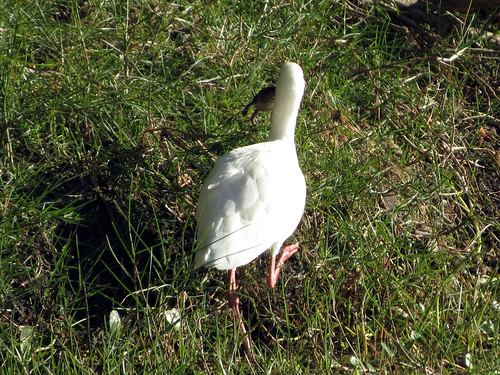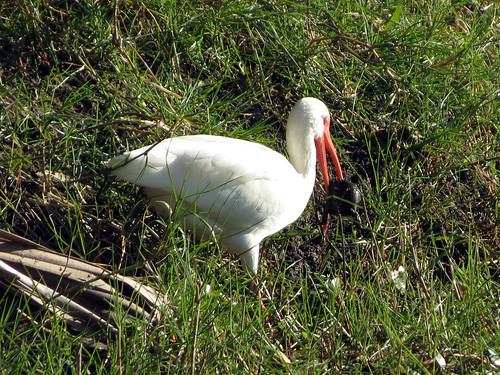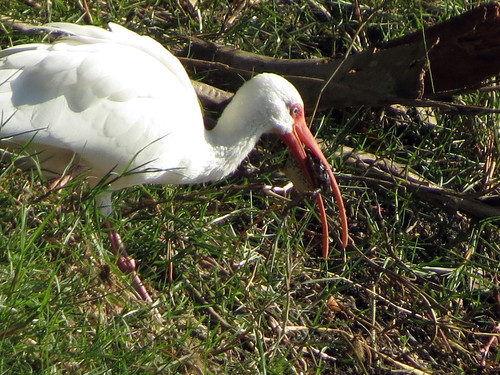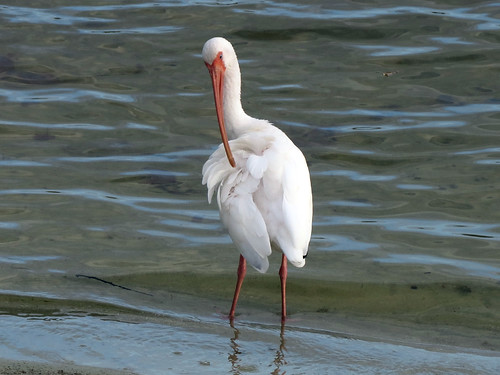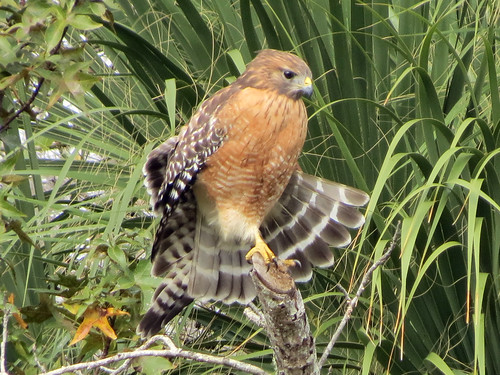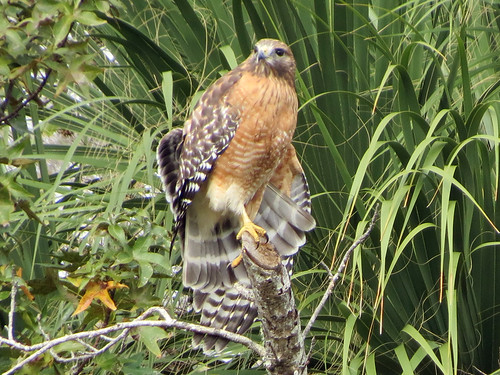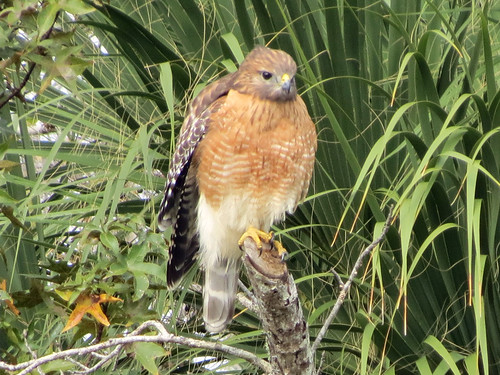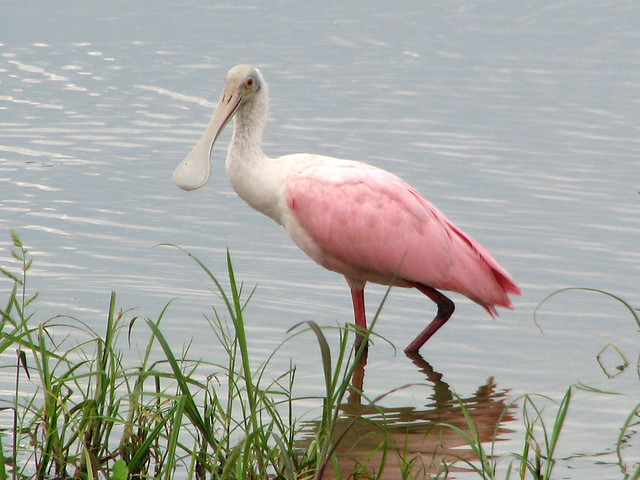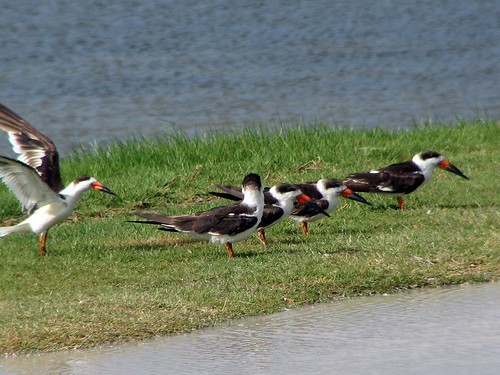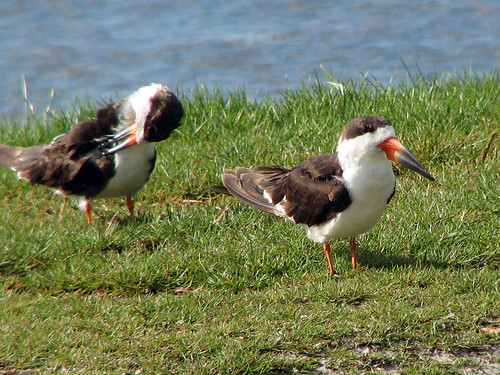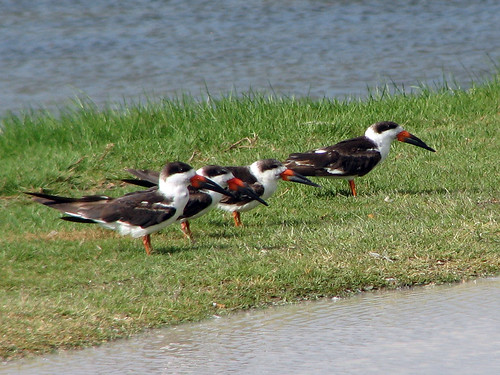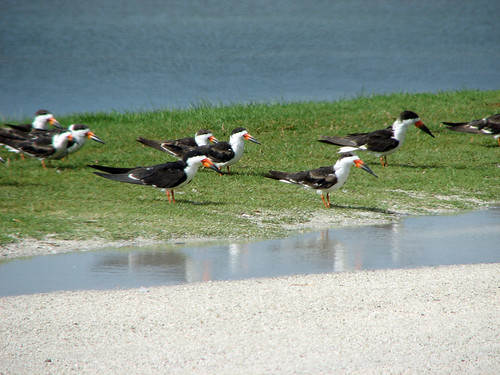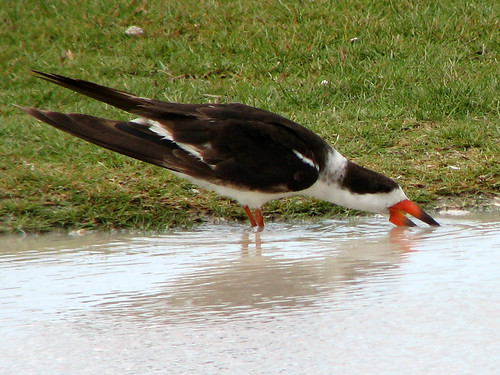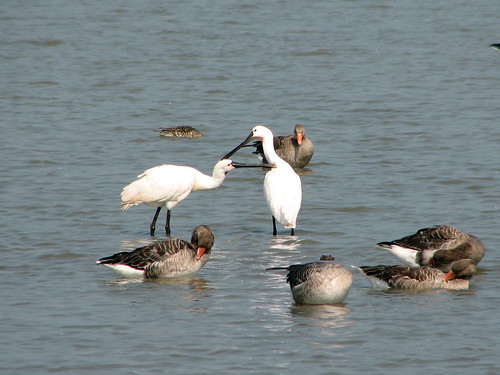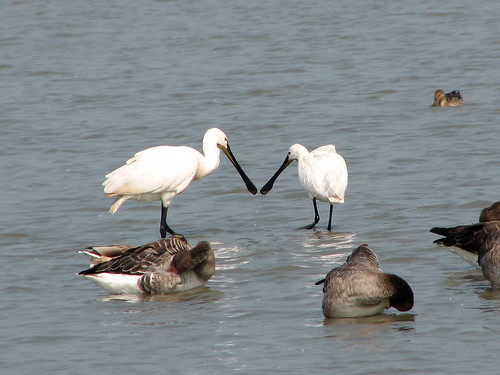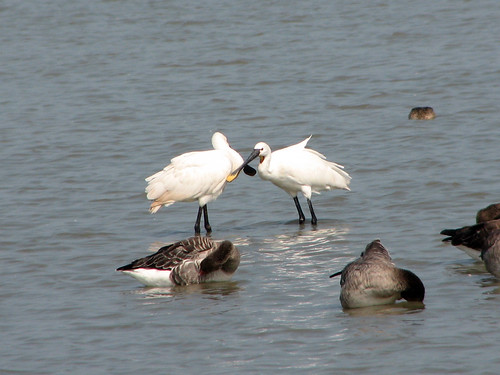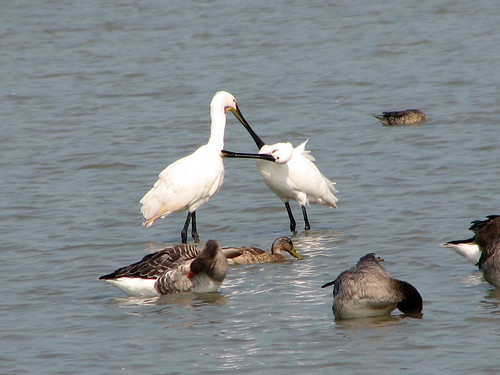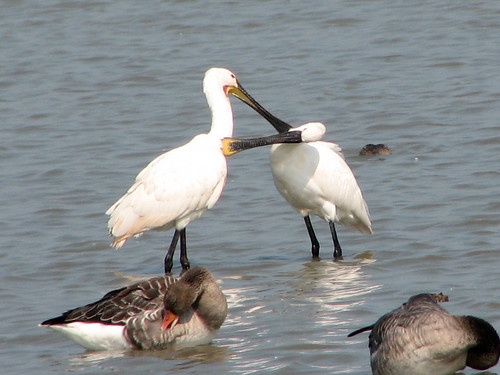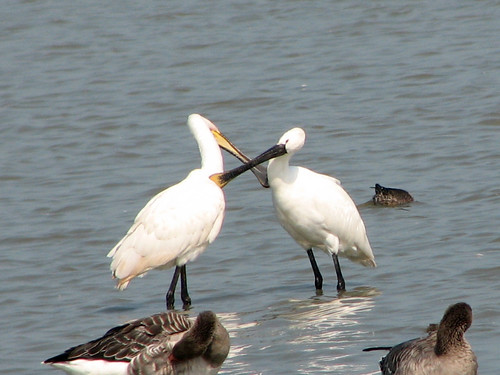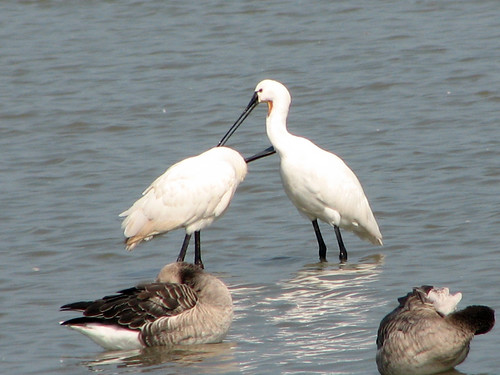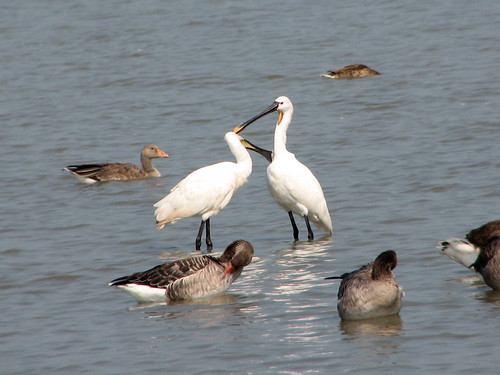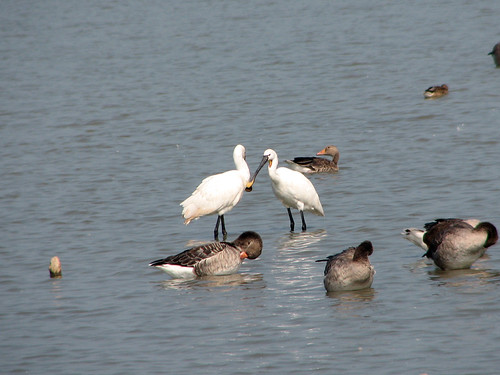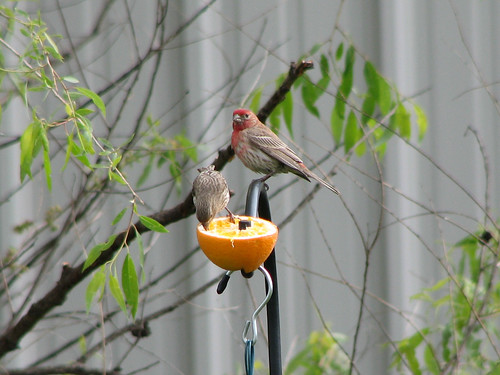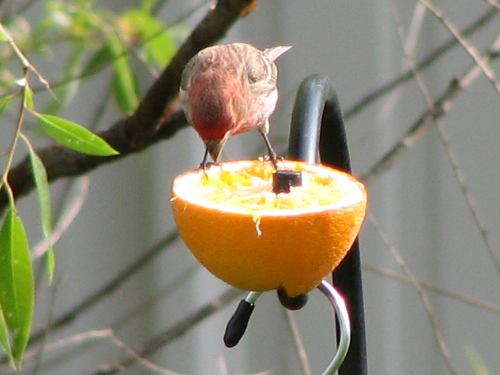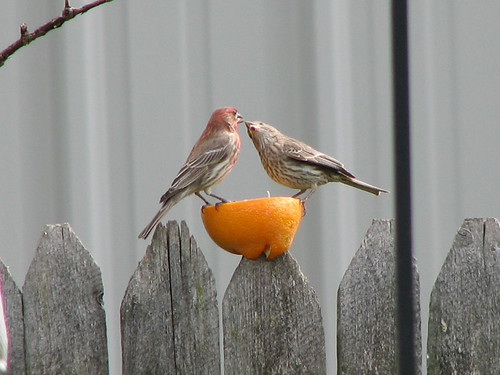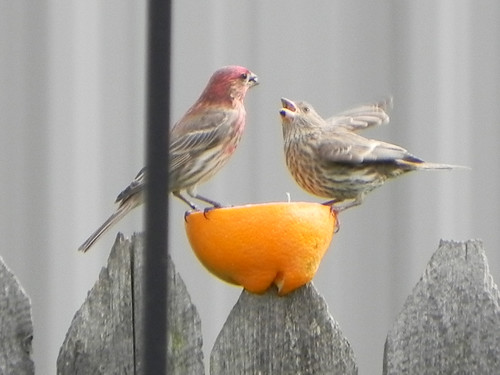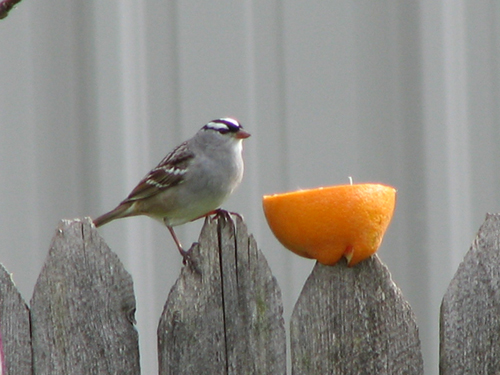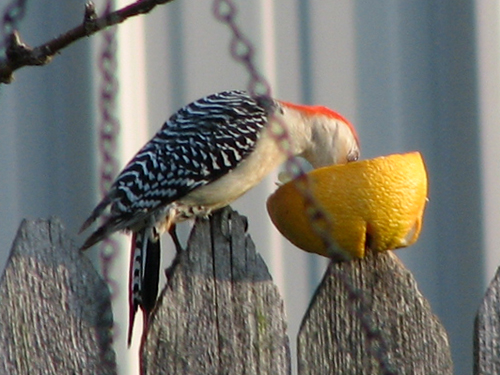Red-shouldered Hawk nest-building
I stopped to watch a Red-shouldered Hawk working on her* nest late last month. The nest was just above the Spring-to-spring Trail at Lake Monroe Park.
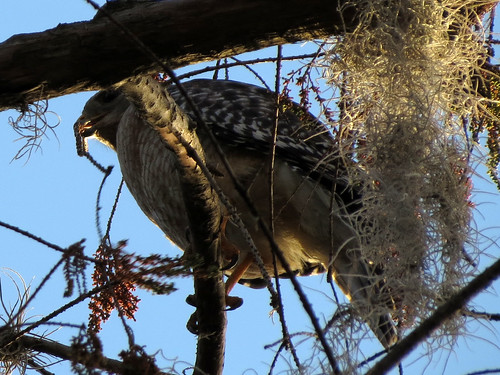
Another good stick for her nest
Red-shouldered Hawks are very protective parents. While I watched this bird prepare for her family, I thought about a couple of Florida Red-shouldered Hawks that made the news last spring for dive-bombing people who ventured into their territory during nesting season in Melbourne and Sarasota.
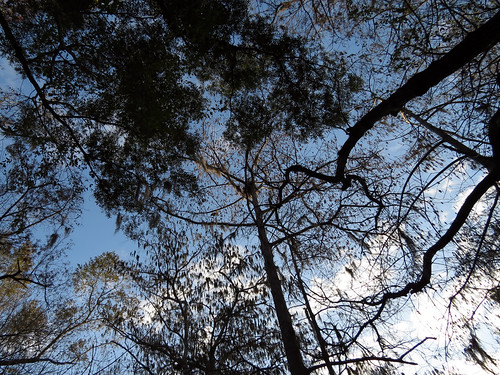
The nest in the middle of the picture
Like the bird I was watching, these other birds made their nests in relatively high-traffic areas. I wonder if this bird and her mate will attack bikers, walkers and joggers on the Spring-to-spring Trail in the coming months? I hope not. I’ll be on their side, though, if it happens.
*Both male and female Red-shouldered Hawks participate in nest-building and -refurbishing. I am not nearly familiar enough with these birds to know if I was watching the male or the female of the pair; I could not judge its size. I just used “she” for convenience.

